Great overview of our progress and current understanding of earthquakes since the 1906 great San Francisco earthquake:
understanding earthquakes and effects
6 10 2009Comments : Leave a Comment »
Categories : earthquake, engineering, history, seismology
informal settlements in tehran
18 01 2009[by SR] I am reading a book by a sociology professor about “informal settlements” in Tehran. It talks about the history and activities of slum dwellers and squatters, hashiehneshinan (حاشیه نشینان), and groups settling in shanty towns (like halabiabad – حلبی آباد) and occupying vacant buildings, and/or informal settlements. The book is Street Politics: Poor People’s Movements in Iran by Asef Bayat (Columbia University Press, 1997), who interestingly grew up in the informal settlements he writes about. Read the rest of this entry »
Comments : 6 Comments »
Tags: Asef Bayat, hashiehneshin, shanty town, slums, Street Politics, tehran, urban informality
Categories : architecture, earthquake, history, sociology
power of incentive
14 11 2008
[By Shideh] My thoughts on the concept of “incentive”…
What do you think would give Tehranians enough incentives to do what’s good for their city? What would give any person enough incentives to care about her surrounding? To cheat less whether in school or in trade, to respect the rules, to drive properly, to keep her/his street clean, to use public transportation, to turn off the lights when not used, to respect order in lines, to build ethically, and finally to come out in the morning with a smile and a loud “good morning, isn’t it a beautiful day” to the neighbors?
Photo courtesy of Hamed
Why do I see this attitude in some cities, and the opposite in others? Is there something in our genes that make us care and cheat less? Is it cultural, deeply rooted in our training as we grow up and if so, can we change that? Or is it purely a matter of the circumstance? I hear my economist friends talk about the fact that there is little evidence to prove that it is a matter of culture or genes (I’m sure some would disagree). Some believe that most people cheat when they can, any where they can, with any background. What is it then that makes a city like Berlin or Tokyo so clean and progressive in public awareness and that makes Tehran and many other cities (i.e. New York City, Mexico City, Cairo, Istanbul, downtown Los Angeles,… the list goes on forever…) the way they are?
I would argue that “incentive” is the main factor. Incentive is what makes me evaluate the cost/benefits of my actions and make a decision on whether it’s worth perusing and taking the risks. This automatic cost/benefit analysis that takes place in my head is not only economic (money related). Much of it has to do with my fear of social embarrassment, punishment of various degrees, and my own social awareness of the influences of my actions on my own future and that of others,…
Comments : 5 Comments »
Categories : earthquake, engineering, history, policy
a nation’s battle for life
9 11 2008[By Shideh] We watched an amazing silent movie last night, produced and directed by Cooper, Schoedsack, and Harrison in 1924, named “Grass.” I highly recommend it as it is an invaluable record of history and tells us quite a bit about the culture and extreme hardships faced by nomads in Persia for survival. It is as if this documentary is not so much of present, but of an ancient past, an unchanging “forgotten” group of brave people. Since many believe that Arians migrated from east to west as nomadic tribes some 4000-5000 years ago, studying the culture of these remaining nomads might be a guide to a deeper understanding of the sometimes misunderstood behavior/desires of our nation as a whole.
Photo courtesy of IranChamber
“In 1924, neophyte film-makers Merian C. Cooper and Ernest B. Schoedsack hooked up with journalist and sometime spy Maguerite Harrison and set off to film and adventure. They found excitement, danger and unparalleled drama in the migration of the Bakhtiari tribe of Persia (now Iran). Twice a year, more than 50,000 people and half a million animals surmounted seemingly impossible obstacles to take their herds to pasture.
“The filmmakers captured unforgettable images of courage and determination as the Bakhtiari braved the raging and icy waters of the half-mile-wide Karun River. Cooper and Schoedsack almost froze when they filmed the breath-taking, almost unbelievable, sight of an endless river of men, women and children – their feet bare or wrapped in rags – winding up the side of the sheer, snow-covered rock face of the 15,000-foot-high Zardeh Kuh mountain.
“Although many documentary historians consider GRASS second only to NANOOK OF THE NORTH, few people have actually seen this legendary film…” Georgia Brown, Village Voice
Comments : 2 Comments »
Categories : history
tehran vs. tokyo
17 10 2008[By Shideh] Tehran mayor, Mr. Qalibaf, has been trying to learn from and collaborate with other big cities in the world to improve Tehran in many ways. I find his attempts promising and in the right direction: http://www.tehrantimes.com/index_View.asp?code=180227
Tehran can learn a great deal from Tokyo in terms of pollution reduction and earthquake safety. Perhaps Japan is one of the few remaining nations that has not paid much attention to the US attempts to impose international sanctions on Iran – up to debate. This is a great start for Qalibaf to attract Japanese investment and collaborate with the mayor of Tokyo to improve Tehran’s infrastructure. However, an important part of the problem in Tehran and Iran in general is not related to technical expertise and lack of knowledge. The main problem seems to be deeply rooted in social awareness and culture. It takes a great number of local experts on the social psychology of Tehranians to solve the essential problems that are unique to Tehran and do not apply to Tokyo. Japan in particular has a culture vastly different from those of Iranians and I hope that their solutions and policies will not be blindly applied to Tehran. Iran has a history of blindly following policies of developed nations to improve its system (i.e. education, infrastructure, architecture, city planning, etc.) and my impression is that these attempts have lead to disastrous results and confusion on our own social/cultural identity.
Comments : 3 Comments »
Categories : city planning, earthquake, engineering, history, policy, pollution, public transit
me and my model!
6 08 2008[By Shideh] I am sitting inside a round building with a big centrifuge and my model that has become like a friend (sort of like Tom Hanks and the Volleyball named Wilson in the movie Cast Away!) I am here to run an experiment as a part of a research project. I have stayed over night monitoring this model (for the past week) and get to rest for a few hours during the days while someone else covers for me. In the process, this little model has taught me a lot! It’s interesting how a lifeless thing can teach us important lessons some times. Or perhaps it’s me being alone at nights having the opportunity to think and reflect… Who knows?
My model and I are sitting in this big round building right now in the middle of no where and are thinking about the significance of the word “patience”. This experiment cannot happen without lots and lots of patience. It seems it’s an important lesson as we all mature. When it’s dark and scary outside, my model and I think about what songs can make us feel better and how funny it is that life has brought us here! We get depressed some times, frustrated at the world for long hours of work and no sleep. Then we start to smile at each other again and think about how I am being trained to be patient.
My model is sitting here quietly as it is slowly filled with water and as I prepare some of the instrumentation and learn about the electrical system here. I sing to it sometimes and I wonder if anyone can hear me. The person who cleans this building arrives at 7am and every time he is startled to see me here!
While I work at nights over my beloved model that I have created from scratch, I think a lot about everything that I don’t normally have time to think about. Most recently, I have been thinking about the concept of creativity. I read a book called “Jame’e Shenasi Nokhbeh Koshi” in Persian many years ago which is about the historical failure of Iranians to encourage reforming minds (like Hasanak Vazir, Amir Kabir, or Mossadeq). According to this book, not only don’t we encourage creativity and reform, we also kill motivation in anyone who has the slightest desire to improve the system. Among many other things, this book argues that Iran became a “user” society at some point in history and has been copying the west ever since. I wondered then if there was much hope for a society with such a fate. I wonder today…
Comments : 8 Comments »
Categories : earthquake, engineering, history, policy
a humble letter to the people in power!
19 07 2008[By Shideh] My mind has been preoccupied with a number of events lately. I am busy with my last experiment while the world around me seems to have turned upside down. I usually worry a lot about the state of practice in earthquake engineering and am passionate in thinking that I can make a difference in this field, in Iran and perhaps other developing countries. Here I am though, sitting in front of the TV watching CNN in my hotel in Davis, tired of hard work all day, witnessing the world turn upside down once more. What is going on? Are Israeli authorities really planning to bomb Iran’s nuclear power stations (and other things)? Is Iran’s government really showing fake or real movie clips of its military maneuvers to threaten Israel back, to bluff, to defend itself, or to scare others? Are American politicians really open to the military option against Iran? Does it seem like a video game to them or do they actually realize it’s people’s lives they are so easily taking? Am I wasting my life trying to solve a tiny technical problem in earthquake engineering hoping to make cities safe, wishing to save lives, while our governments can blow up the whole world in one second? Who am I trying to save?
I am helplessly writing to you, my governments, the authorities or decision makers of the world, you who think you can make decisions on my behalf to kill others, I am writing this letter to you hoping to make you realize that I am disappointed in how you have all used my tax money toward propaganda against each other, to promote our differences, and to create hatred. When are you going to stop fighting and start solving conflicts without actual conflicts? Read the rest of this entry »
Comments : 8 Comments »
Categories : city planning, earthquake, engineering, history, policy
earthquake prone tehran | تهران زلزله خیز
13 06 2008[By Shideh] Mr. Alireza Sarvi kindly sent us his article on the earthquake risks that Tehran currently faces; to download the complete article, please click on: earthquake prone tehran
If you have difficulty downloading the entire file, please try downloading one page at a time as: part_1, part_2, part_3, part_4, part_5, part_6
It’s a great overview of Tehran’s geological and construction history and the risks involved; an insightful and critical study which you may find helpful.
Comments : 3 Comments »
Categories : city planning, earthquake, emergency response, engineering, history, policy, Uncategorized
kurdi house
6 06 2008
[By Shideh] We arrived in Sanandaj at last and greeted their famous freedom statue that most surprisingly looked exactly like a famous dance form of Shahrokh Moshkin Ghalam. We stayed with the family of two most precious human beings who happen to work for Shawhin’s dad. They had a cozy house on the hills of Sanandaj: small, humble, and darvish style, but had a view of the city. As excited and fascinated as I was with their steep snaky streets and the gorgeous architecture of their houses, doors, and windows, I couldn’t resist noticing their weak construction methods and lack of safety in the case of an earthquake (which is quite likely). What would happen to these people if an earthquake striked? Images of Bam came to my head and it was hard to push them away as I was getting frustrated with my lack of power to help.
Freedom Statue — Photo courtesy of http://www.geocities.com/SoHo/3684/

Comments : 12 Comments »
Categories : earthquake, history, Uncategorized
On the way to Sanandaj
22 05 2008[By Shideh] To me, leaving Tehran always brings mixed feelings. The comfort of having access to everything I am used to (which make me spoiled), familiarity with my surroundings, and the natural love for my birth place with so many memories on one side made me reluctant to leave, while the chaos, pollution, traffic jams, and the stressful state of Tehran made our journey to Kurdestan easier. We started driving toward Qazvin, then Hamedan toward Sanandaj. The drive was about 10 hours while we barely felt any of it. When we first exited Tehran, we saw a vast lifeless desert in front of us. There were mountains in the background, but no sign of water or greenery. This lasted for a couple of hours when we started to see farms on the two sides of the road. Our surrounding slowly became greener and the mountains changed shape. In some areas it was calmly raining, in others we saw a sunny sky. Zagros was slowly coming out of its shell and appeared in front of us with its young powerful curves, sort of welcoming us first time visitors. What beauty, words can hardly describe it. At that moment, I thought of a relatively cheesy song by Elvis when I saw Zagros and found myself helplessly in love with its beauty: “but I can’t help falling in love with you…”
This mountain range is relatively young compared to Alborz and its shape is distinctly different. It has been a base for many ancient civilizations with mighty rivers and lands for farming.
Comments : 2 Comments »
Categories : history, Uncategorized
heading to zagros
21 04 2008We are heading to Iran this weekend to attend a very exciting and special conference on Zagros Tranditional Settlements in Sanandaj, Kurdistan, organized by the International Network for Traditional Building, Architecture, and Urbanism. We will write much more about the lectures and sites; but please let us know if there is anything specific that you want us to pay attention to, take pictures of, or ask the experts attending and/or presenting at the conference.

Photo courtesy of International Network for Traditional Building, Architecture, and Urbanism
Comments : 6 Comments »
Categories : city planning, engineering, history, policy, sustainability
norooz
12 03 2008[By Shideh] It is this time of the year again; Yaade Norooz e Tehran Bekheir. I feel the nature’s longing for spring, I feel its heart beat for spring, its open arms to welcome spring as the trees, flowers, and every living creature (on the northern hemisphere) show their excitement for the New Year and are once again filled with life, waiting to greet a new day, Norooz. I want to deeply clean our house this weekend, clean every closet, every little detail that has been neglected for a year. I want to wear new clothes, get a hair cut, learn new things, meet new people, and send letters/emails/text messages to people I have already been fortunate to know. I want to be all prepared to greet Norooz this year, to be in phase with my surroundings in welcoming Spring into our little house in Berkeley, this wonderful Iranian tradition that I can’t imagine living without.
My mother has grown “sabzeh” for everyone in my family this year (a type of plant/herb, a “haft seen” item as a part of the Norooz tradition). Every morning I wake up to see that it has grown noticeably, as if it has realized that Norooz is coming in a week and it has to grow to a decent size before Norooz enters the house. Flowers in our little yard are all prepared and full of excitement and life while quietly waiting, as if they are holding their breath, looking at each other with their shiny eyes, hiding their smile, waiting… Read the rest of this entry »
Comments : 19 Comments »
Categories : history
i have a dream
21 01 2008[By Shideh] Today is a national holiday in the U.S., dedicated to Martin Luther King, Jr., one of the great leaders of the American Civil Rights Movement. He is mostly known for his efforts to end segregation and racial discrimination through non-violent means. His birthday marks a day of hope for all African Americans here as well as for many others around the globe. This is one of my favorite holidays and I wanted to write a post here in his honor and in the memory of hope. Here is a video of his famous speech, “I Have a Dream”:
Comments : 3 Comments »
Tags: American Civil Rights, history, Martin Luther King, United States
Categories : history, policy, Uncategorized
richard frye
20 01 2008[By Shideh] A very interesting interview with an American scholar, Richard Frye, at Harvard University about his feelings for Iran. Enjoy:
Comments : 3 Comments »
Tags: Harvard University, history, iran, richard frye, United States
Categories : history, Uncategorized, university
powerful women
28 12 2007[By Shideh] Benazir Bhutto’s death has shocked hundreds of thousands of people from around the world and has left many of her supporters in dismay. Pictures of her funeral on Friday are heartbreaking, seeing people in such grief. I want to write a post on this weblog in her memory as she was always an icon of hope as a powerful and influential Muslim woman and a role model for many in our region of the world. My deepest condolences to the people of Pakistan and to her family. It is truly a great loss for the entire world and for the region. Here are some pictures of her life and final moments that I found on line:
http://www.chicagotribune.com/news/nationworld/chi-071227bhutto-photogallery,0,3762424.photogallery
Image borrowed from: http://www.chicagotribune.com/
There are and have been many women like Bhutto who risk their lives to bring change and to protect their families, children, and countries at large. One such group that is beginning to gain power is the Iranian “Mothers for Peace,” a group that announced its formation in November as a movement seeking peace and freedom (http://motherspeace.blogfa.com/). I urge the readers, anyone who cares for peace, to donate to this group of Iranian women who are standing up for their rights and the rights of their country and children with no violence what so ever. All the power to those who rise to make the changes they want to see, instead of waiting for others to make them.
Comments : Leave a Comment »
Categories : history, policy
town carved from rock
21 12 2007A town famous for its beautiful architecture and energy efficiency. Interesting video on National Geographic about Kandovan:
http://news.nationalgeographic.com/news/2007/12/071205-village-video-ap.html
picture borrowed from: www.Anvari.org
Comments : Leave a Comment »
Categories : architecture, environment, environmental, history, sustainability, Uncategorized
az maast ke bar maast — از ماست که بر ماست
16 11 2007[By Shideh] We, along with a group of friends from Berkeley, attended a talk by Dr. Soroush last night at Stanford University on “cultural challenges of Iranians in today’s world,” which brought up many new thoughts and ideas for healthy debate! I truly admire his vast knowledge of Iran’s sociology and culture and learned a lot in the short time that we had, even though I didn’t necessarily agree with all of his comments. In this post, I will mention a few highlights of his talk that I found most interesting. Please note that the material below is more or less what I recall from Dr. Soroush’s talk and it does not reflect my personal stance on these issues.
Comments : Leave a Comment »
Categories : history, policy
interested in earthquake engineering?
7 09 2007[By Shideh] For those interested in Earthquake Engineering: GEER (standing for GeoEngineering Earthquake Reconnaissance), a U.S. based organization aimed to document geotechnical engineering effects of important earthquakes and to advance research and practice in this field, has a great website with a collection of stunning photographs and detailed reconnaissance reports of the damage observed after major earthquakes around the world.
http://gees.usc.edu/GEER/recent_geotechnical_engineering.htm
Comments : Leave a Comment »
Categories : earthquake, engineering, history, safety, seismology
getting to know tehran
25 08 2007[By Shideh] As one of many Tehran lovers, I found it fascinating to go through a few old pictures of this city, each showing her rich history and significant role in Iran’s socio-political movements. Shahram Razavi has a wonderful collection of old Tehran pictures at http://www.worldisround.com/articles/255726/index.html
I’m including a few of his photographs below. But make sure to visit his site as he has gathered an extensive collection of amazing photographs.
On a different level, Ja’far Shahri — a Tehrani writer (1914-1994) — wrote an extremely creative and fascinating chronicle of Tehran’s twentieth-century social history. He wrote about twenty books most of which about Tehran. Abbas Milani has dedicated a chapter of his book “Lost Wisdom – Rethinking Modernity in Iran” to Ja’far Shahri’s personal odyssey which you may find helpful in better understanding Tehran — “a city with a long history and a short memory.”
Comments : Leave a Comment »
Categories : architecture, history
conference on zagros traditional settlement in sanandaj
17 08 2007[By Shawhin]
با اینکه این لینک مربوط به تهران نیست کنفرانس بین المللی سکونتگاه های زاگرس مطالب جالبی را در مورد سازه های تاریخی (معماری محلی و نگهداری از سازه های تاریخی) ارائه خواهد کرد.
While not Tehran-specific, this conference deals with concepts in architecture/planning that can be considered relevant (i.e. vernacular architecture, historic structure preservation, etc):
http://www.uok.ac.ir/zts-confe/indexf.htm
http://www.intbau.org/zagros2008.htm
It looks like an amazing event.
Comments : 1 Comment »
Categories : architecture, history
maps of tehran’s development
5 07 2007The link below has some good graphics to go with the history of the development of Tehran in the previous post:
http://www.tehrangis.com/atlas/ASPs/English/report.asp?MS_Code=02
Comments : Leave a Comment »
Categories : city planning, history
a summary of the history of urban planning and development in tehran
5 07 2007[By Shawhin]
In order to better understand development and planning in Tehran, I found it helpful to get a sense of the where Tehran started and how it got to where it is today. Most of the information in this post is summarized from a paper by A. Madanipour, who is a professor in the department of architecture at NewCastle University. His paper is titled “Urban Planning and Development in Tehran”.
This summary list highlights important events in Tehran’s planning/development, chronologically from the past to the present. All dates are given in CE = AD = ‘milady’:
- Tehran starts as a village outside the ancient city of Ray
- 1553 Construction of the city walls (square shaped) and a bazaar in Tehran – the first major planning effort in Tehran
- 1785 Tehran is selected as the Qajar capital – the city grows from 15,000 inhabitants at the end of the 18th century to about 150,000 by the 1860’s Read the rest of this entry »
Comments : 1 Comment »
Categories : city planning, history, policy, sustainability
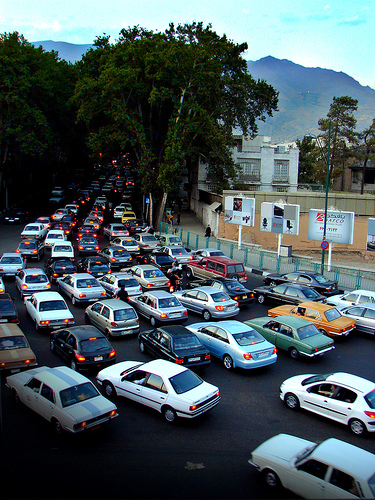
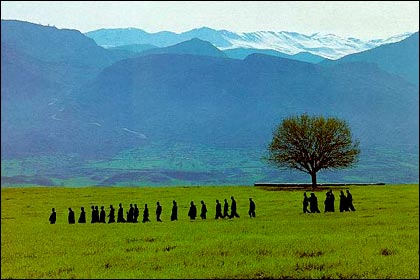




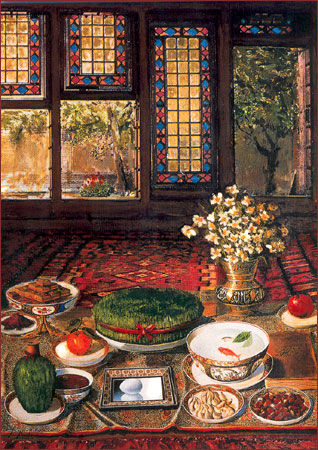
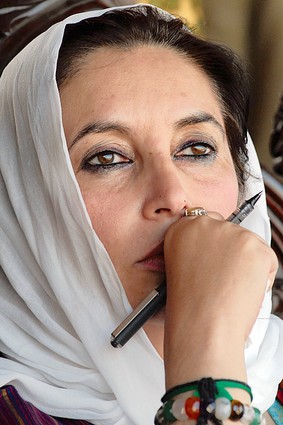
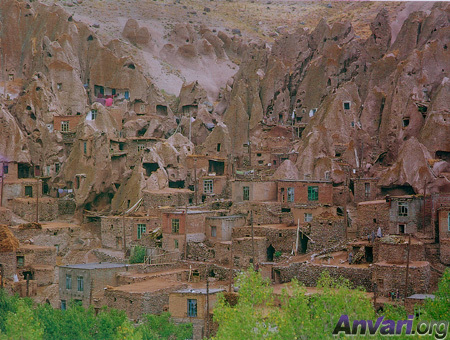
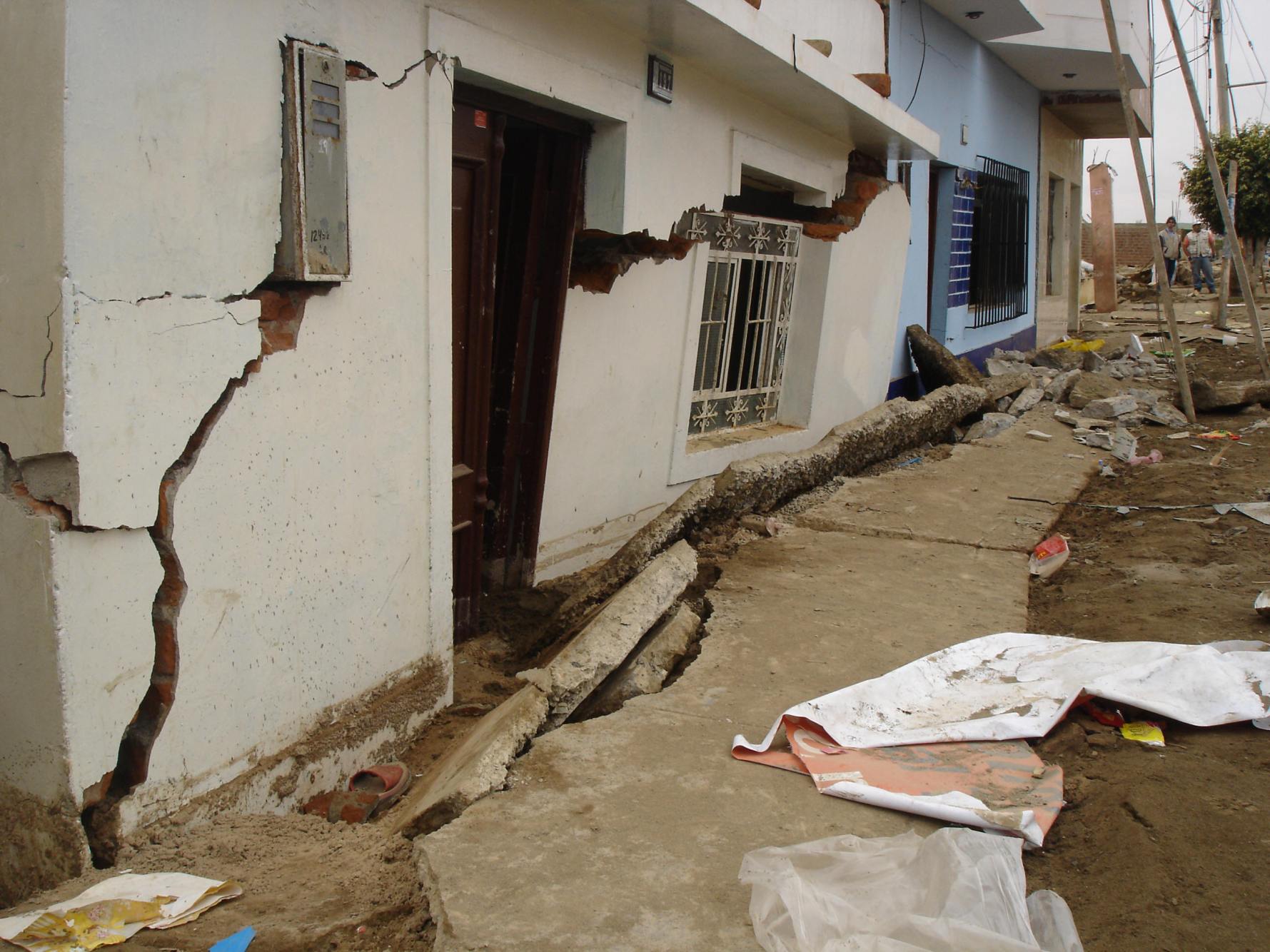


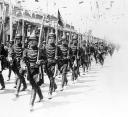

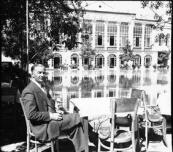
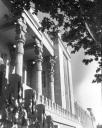
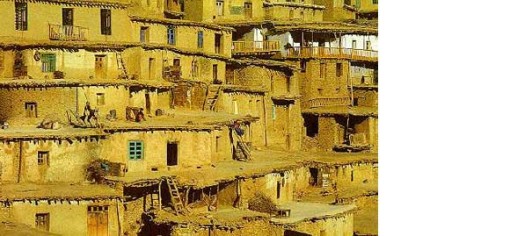
Recent Comments